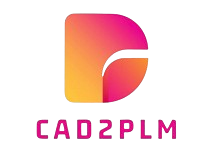Notes & Pre-requisites
Teamcenter base package, Teamcenter patch(s), Active Workspace base & patch, JBoss (EAP 7.4), Oracle database installer, Amazon Corretto (JDK 11 build used here: 11.0.17_8), and any required license server info (SPLM_LICENSE_SERVER).
Create backups and run installers and database tools as Administrator. Make sure ports (8080, 7001/7002, 8086, Solr/Indexing ports) are available and firewall rules allow required traffic.
1. Install Amazon Corretto (JDK 11)
Teamcenter 14 requires JDK 11 — in this guide we use Amazon Corretto 11.0.17_8.
Step-by-step
- Run the Amazon Corretto installer (double-click) → Next → Install → Finish.
- Copy the JDK path (for example:
C:\Program Files\Amazon Corretto\jdk11.0.17_8). - Set environment variables: add the JDK
\binto PATH and set JAVA_HOME if desired. - Set SPLM_LICENSE_SERVER environment variable if required by your license server configuration.
setx JAVA_HOME "C:\Program Files\Amazon Corretto\jdk11.0.17_8"
setx PATH "%PATH%;C:\Program Files\Amazon Corretto\jdk11.0.17_8\bin"2. Oracle Database Setup
Install Oracle (Software-only, create single-instance DB)
- Run Oracle setup → Choose Install software only → Single instance → Enterprise Edition → Use Windows built-in account.
- Choose an installation folder for DB volumes and data files.
- Allow required permissions and finish installation.
Create Teamcenter DB with DBCA
- Open Database Configuration Assistant (DBCA) as Administrator → Create Database → Advanced configuration → Choose name (e.g.
Teamcenter_oracle). - Set Fast Recovery Area size (example: 8000 MB), listener name and memory options.
- When asked for administrative passwords, use a consistent password (example used in guide:
infodba). Set it for INFODBA, SYSTEM, SYS.
-- Example: connect using sqlplus after DB creation
sqlplus sys/infodba@//localhost:1521/Teamcenter_oracle as sysdbaCopy required DB templates / assistants
If Teamcenter provides DBCA templates, copy them to ORACLE_HOME\assistants\dbca\templates before DB creation so Teamcenter-specific templates are available in DBCA.
3. Teamcenter Base Installation
Run tem.bat and install Teamcenter Foundation
- Open a command prompt as Administrator and run
tem.batfrom the Teamcenter installable directory. - Select Install → Teamcenter Foundation (default) → Next.
- Choose Corporate volume and Server volume locations; create directories for volumes.
- On the FSC ID screen, remove any leading '-' (as per installer instructions).
- Select Populate database and create a new data directory.
- Provide database user/password (e.g.
infodba) and administrative password for Teamcenter (example usesinfodba). - Complete installation (Start). Teamcenter Foundation will be installed.
Notes: file locations & environment
- Keep base & patch zips extracted in a single folder for easier referencing during patch steps.
- Common PATH entries used by the guide:
C:\Program Files\Amazon Corretto\jdk11.0.17_8\bin C:\installables\WINDOWS.64_193000_db_home\bin C:\Program Files\Common Files\Oracle\java\Javapath
4. Server Manager & Sample Files
Install Server Manager & Sample Files via tem.bat
- Launch
tem.bat→ Configuration Manager → Install Server Manager and Sample files. - Provide Teamcenter administrative password and OS user; choose existing user & DB if required.
- Finish install — this configures server manager UI, pools, and samples.
5. Rich Client (4-tier) Installation
Install Rich Client 4-tier
- From the Teamcenter patch folder run
tem.bat→ Install → choose Rich Client 4-tier and Business Modular IDE 4-tier. - Select new FCC (if needed), provide hostnames and replace default ports (e.g. change 7001 to 8080 etc.) as per your environment.
- Finish and close the installer.
6. Deploy tc.war — Web Tier
Deploy steps (ICD copy and configuration)
- Run
INSTALL_TCWEBfrom the base file — extract contents to a folder. - Run
insweb(or appropriate installer), use "Copy ICDs" and point tobasefile\webtier\icd. - When replacing
staging1choose a new name liketcwar. Use "Main — copy ICD files locally". - Set Server_Manager_URL to
http://<server>:<port>/PoolA(e.g.http://hostname:8086/PoolA).
7. JBoss (EAP 7.4) Configuration
Required changes to standalone.xml and startup
- Edit:
jboss_setup/jboss-eap-7.4/standalone/configuration/standalone.xml - Add near the top (example around line ~178):
<global-modules> <module name="org.jboss.as.jmx" slot="main"/> </global-modules> - Increase deployment timeout (for large deployments) — add attribute
deployment-timeout="600"in the appropriate server element (example near line ~167). - Start JBoss:
jboss_setup/jboss-eap-7.4/bin> standalone.bat— Keep this window open while launching the Teamcenter client.
8. Active Workspace (AWC) & Microservices
Microservice framework & patch updates
- Run
tem.bat→ Maintenance → Update Manager → point to microservice framework kit (e.g.TcMicroserviceFramework6.0.0_wntx64). - Run update manager again for Active Workspace kits (e.g.
Tc14.0.0.0_ActiveWorkspace6.0.0_wntx64) and accept data model updates when prompted. - Create a log folder and provide DB user/password for update operation; start and monitor logs for errors.
Microserver installation (select features)
- tem.bat → Configuration Manager → Add/Remove Feature → expand Microservices and select:
- Microservices framework
- Declarative artifact service
- File repository service
- TC GraphQL service
- Choose Master node settings, create keystore (keystore password & confirm; example used
infodba), set file repository path and file repo storage. - Provide microservice webtier URL (
http://hostname:8080/PoolA) and indexing engine credentials as required. Start installation and finish.
AWC Client & Server Installation
Install AWC client, gateway, admin, and server extensions via Configuration Manager → Add/Remove Feature.
- For gateway: replace
<hostname>with your system name and configure passwords (example password:infodba). - Active Workspace Server — enable features like Active Content Structure, Reporting, Workflow, Active Admin, UI Builder, etc. Provide admin password and indexing/search engine URLs where needed.
9. Solr / Indexing (AWC Indexer)
Install Indexing Engine (Indexing Server)
- tem.bat → Configuration Manager → Add/Remove Feature → Active Workspace → Indexing Server features (Active Workspace Indexer).
- Configure indexing engine options and check indexer boxes required by your environment. Start and finish.
- Copy content from provided data folder from AWC setup (if present) into
TCDATAdirectory (unzip data.zip if needed).
Troubleshooting & Best Practices
- Permissions: Run installers as Administrator; ensure database listener is reachable.
- Logs: Always check installation and update logs (create a consistent logging folder and point installers there). Typical log locations:
<TC_ROOT>\install\logsor as specified in Update Manager. - Timeouts: Increase application server deployment timeouts for large WARs (e.g. 600s).
- Ports & Firewalls: Confirm ports (8080, 8086, Solr/Indexing ports, database port 1521) are open and not blocked.
- Version compatibility: Apply microservice and AWC patches in the order recommended by Siemens/Teamcenter release notes.
